The King Bird-of-Paradise is not only the tiniest, but also one of the most vibrant birds out there. Its stunning colors and appearance have earned it the nickname “living gem.”
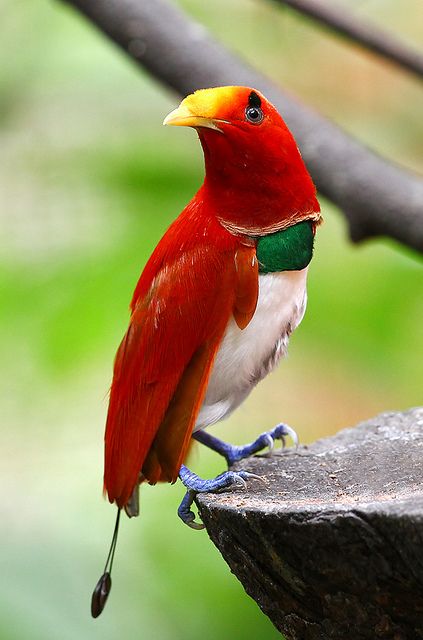
The king bird-of-paradise or Cicinnurus regius is a type of passerine bird that belongs to the Bird-of-paradise family known as Paradisaeidae. It’s highly distinguishable because of its striking red hue and two long, wire-like tail feathers, which serve as an ornament. The ends of its feathers are also covered in bright green feathers that form a circular swirl. Additionally, it has a white belly and a green stripe that runs across its chest.
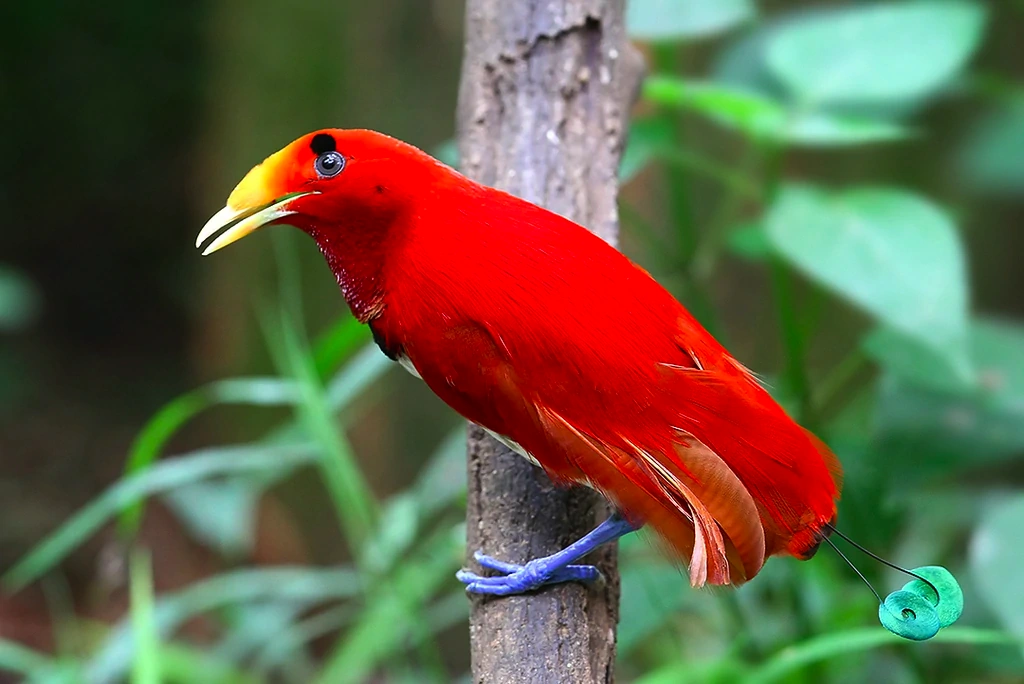
In addition to his distinguishing features of a bright blue back and black wings, this male bird also boasts black spots above each eye. On the other hand, the female of the species is not as striking, sporting an olive-brown back, head, and throat, along with a patchwork buff chest.
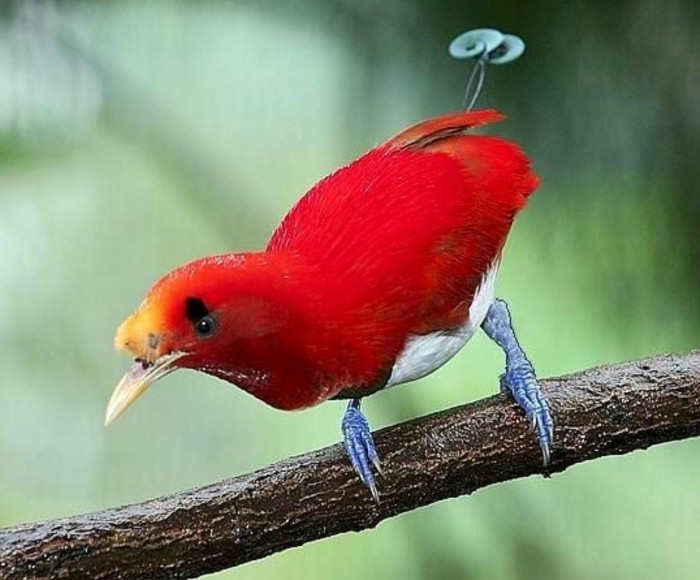
These feathered creatures are native to Papua New Guinea and can be easily found in various parts of the country as well as its nearby western islands.
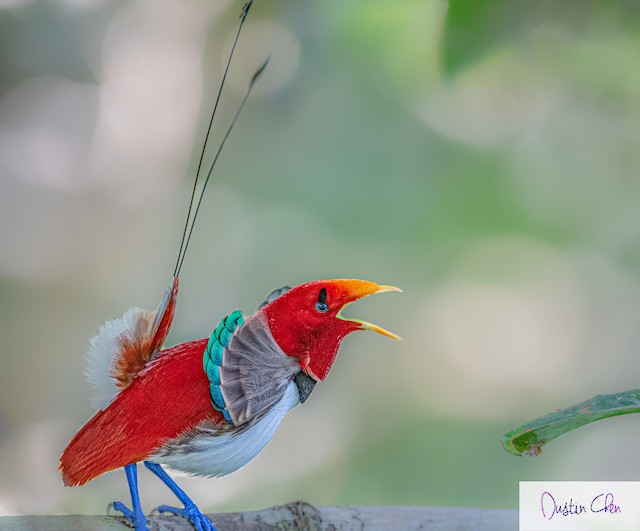
The King bird-of-paradise prefers to dwell in a variety of habitats such as lowland rainforests, gallery forests, forest edges, and even tall secondary forests that have been disturbed.
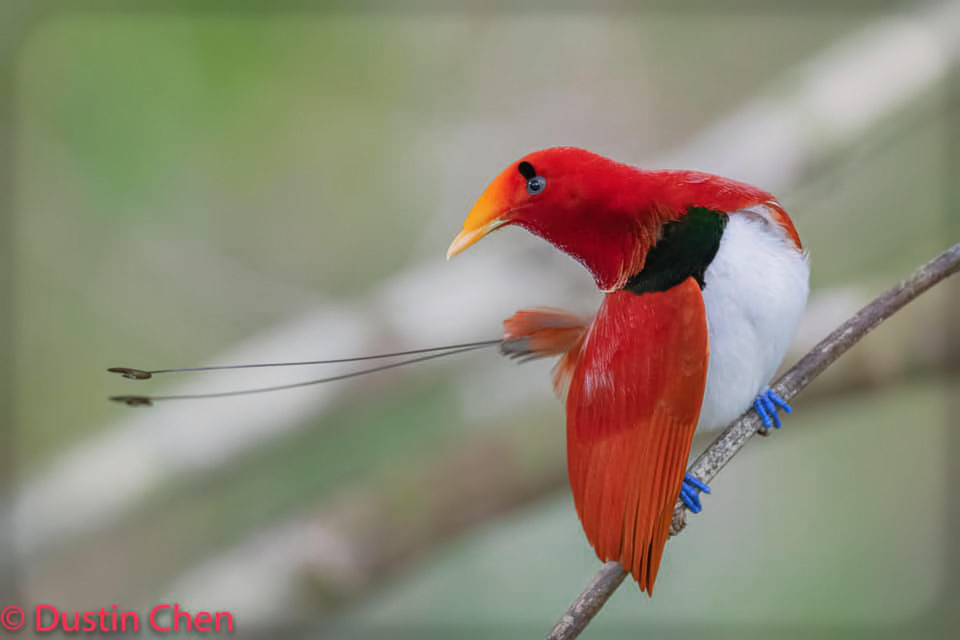
As a frugivorous creature, the King bird-of-paradise primarily feeds on fruits and small invertebrates.
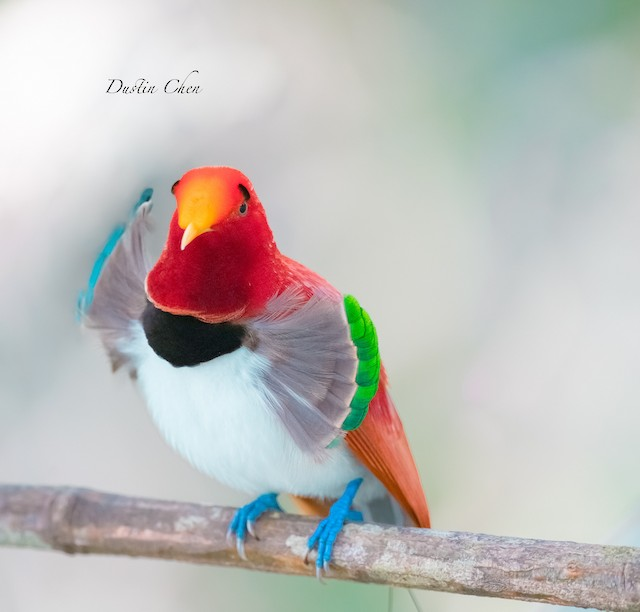
The male King birds-of-paradise engage in polygyny, which means that they will seek out another female after mating. To attract a mate, the male will perch upright on a branch and vibrate his wings. He will then spread his pectoral feathers and raise his tail over his head while dancing. Afterward, he will swing his tail and body side to side before hanging upside down from the branch with folded wings, swinging back and forth like a pendulum.
Once the female is attracted and mated, she will build an open cup-shaped nest in a tree cavity and lay up to two eggs. The female will then incubate the eggs for up to 17 days until they hatch. After hatching, she will take care of the chicks on her own and feed them until they are fully fledged.
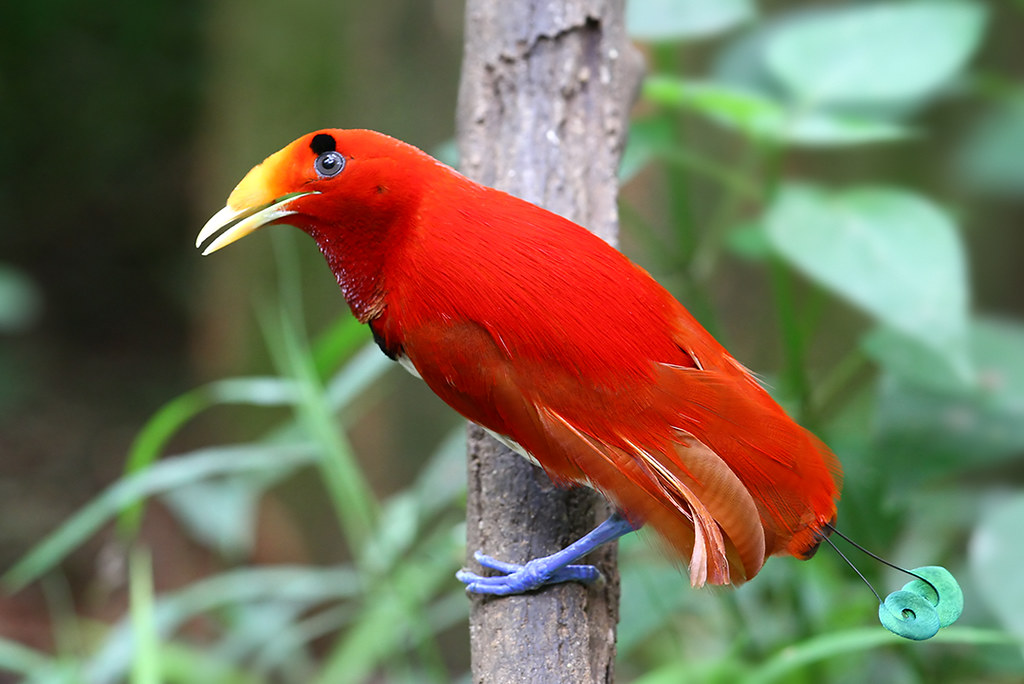
The King bird-of-paradise is a commonly found species over a vast area, as per the International Union for Conservation of Nature (IUCN). However, there’s no record of its total population. Currently, this species is marked as Least Concern (LC) on the IUCN Red List, and their numbers seem to be consistent.
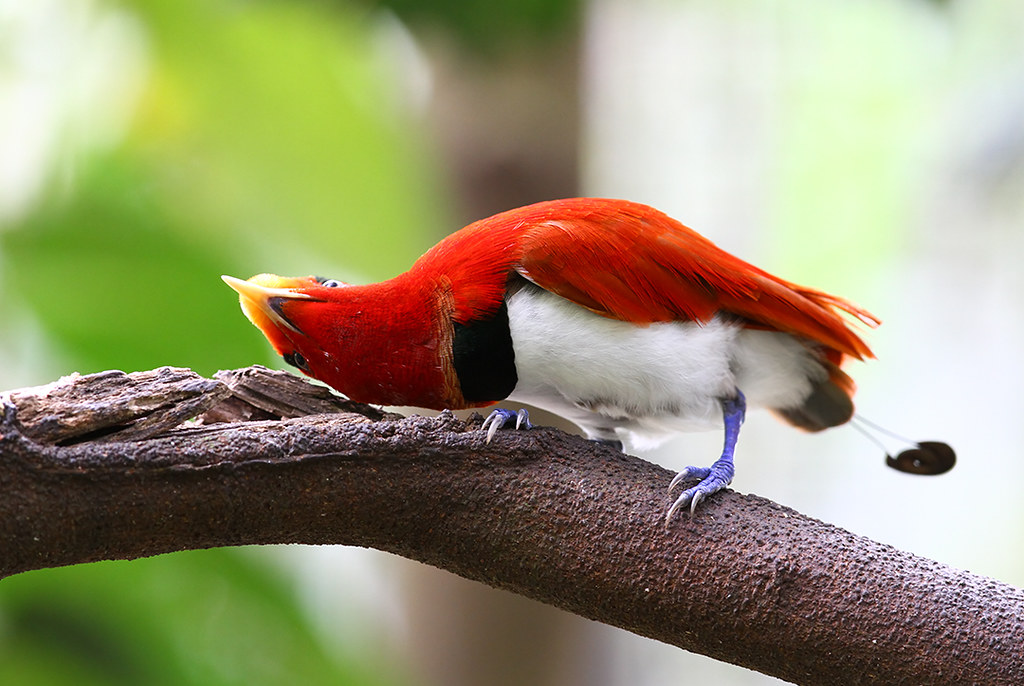
Take a moment to observe and listen to the bird in the video below.
